Living in Australia often feels like living on a discovery channel. Even from the bustling heart of Sydney, it’s remarkably easy to stumble upon pristine beaches and breathtaking coastal views shared with surprisingly few people on an average weekend (and no, I’m certainly not talking about the Bondi to Coogee Walk!). This sense of hidden beauty only intensifies when you start road-tripping along the incredible New South Wales coastline, heading both north and south. Here, you’ll uncover places that genuinely feel like secluded paradises, far removed from the everyday.
If you’re yearning for stretches of sand where the only footprints belong to local wildlife, and the only sounds are the rhythmic waves, the whispering wind, and the calls of native birds, then this post is your guide. You might be thinking, why would I share these cherished coastal gems and risk them becoming crowded? And it’s a fair question! But honestly, I’m not too worried. Iconic regions like Sydney Harbour, Jervis Bay, or Byron Bay will always draw the majority of visitors, regardless of what’s written.
Instead, my goal is to help you – whether you’re a local seeking a new escape or an overseas visitor planning your epic road trip – discover one or two coastal national parks that perfectly slot into your itinerary, adding an extra layer of wonder to your adventures. Because no matter how deeply you love Australia, there’s always more to fall in love with. That’s been my experience, and I truly hope it becomes yours too.
Uncovering NSW’s Lesser-Known Coastal National Parks
Myall Lakes National Park: lakeside paradise meets coastal dunes
Nestled on the Mid-North Coast, just north of Port Stephens, Myall Lakes National Park is a sprawling wonderland where massive freshwater lakes meet stunning coastal dunes and lush forests. It’s a place of incredible diversity, often overlooked by those rushing further north.
What makes it unique? It’s home to one of NSW’s largest coastal lake systems, offering a unique blend of freshwater and saltwater activities right next to dramatic ocean beaches.
Our favorite activities:
- canoeing across the lakes and waterways, like from Mungo Brush campground to Tamboi picnic area on the Myall River, in White Tree Bay, or from Korsmans Landing to Violet Hill campground
- swimming in the lakes (they warm up much more than the ocean!)
- exploring massive sand dunes, like Dark Point (Mungo Brush)
- walking up to Sugarloaf Point Lighthouse for stunning views
- bushwalking on the Mungo Rainforest Track (1.7 km loop) from Mungo Brush campground
- lakeside camping
- endless walks on 22 km long Mungo Beach (the “Hole in the wall picnic area” is a good access point)
Best wildlife experience: Spotting birdlife (cormorants, herons, sea eagles) while canoeing.
Best accommodation:
- White Tree Bay campground: An amazing lakeside NSW Parks campground, with shallow water and a small sandy bay, BBQ and picnic tables. Facilities are basic: only toilets.
- NRMA Myall Shores Holiday Park: lakefront holiday park, with villas and safari tents, a swimming pool, playground, shared amenities, BBQs and on site dining at Barefoot Café & Pizza.
- Reflections Seal Rocks – Holiday Park: oceanfront holiday park, with cabins, villas or tents, BBQ and a shared kitchen.
My tips:
- Lakeside accommodation can be popular (and the campground is not large either), so book ahead, especially in peak season.
- Bring insect repellent – it’s a lake system!
- If you go paddling, don’t expect it to be easy. The surface of the large lakes can become quite choppy in windy conditions.
- The most secluded beaches are the lakeside ones, like at White Tree Bay campground or Mungo Brush campground.
- The most protected ocean beach is Number One Beach, particularly the southern side at low tide.
Hat Head National Park: rugged headlands and pristine beaches
Further north, Hat Head National Park is a rugged gem characterized by dramatic headlands, unspoiled beaches, vast wetlands, and dense coastal forests. It’s a place where the mountains meet the sea in spectacular fashion.
What makes it unique? It offers stunning panoramic views from iconic lookouts (like Smoky Cape Lighthouse) coupled with quiet, sweeping beaches.
Our favorite activities:
- walking up to Smoky Cape Lighthouse for amazing views
- scenic picnic at Smoky Cape picnic area
- completing the Korogoro walking track (3.2 km loop), one of the most amazing coastal walks in Australia
- bushwalking to fantastic viewpoints (Green Island walking track) or down to fabulous beaches (Jack Perkins walking track to North Smoky Beach)
- enjoying coastal views and pretty beaches along the Connors walking track (3.7 km one-way)
- exploring the Hat Head sand dunes (the best access points are the beaten tracks from Hungry Gate campground)
- beachfront camping at Smoky Cape campground (okay, campgrounds are never actually on the beachfront, but sheltered in the forest behind the beach, a few steps away)
- floating on Korogoro Creek towards Connors Beach as the tide is falling
Best wildlife experience: waking up to the magical songs of magpies and kangaroos grazing among the tents at Smoky Cape campground. But this park has abundant wildlife, we spotted kangaroos and goannas at the Smoky Cape picnic area and along the Connors walking track, too.
Best accommodation:
- Smoky Cape campground: basic campground (toilets only) in a picturesque forest setting, with access to South Smoky Beach. Good chance to meet with local kangaroos in the morning.
- Hat Head Holiday Park: beachfront holiday park with bungalows and cabins; access to Connors Beach and Korogoro Creek (the creek has very sheltered waters, especially at low tide). There’s an outdoor fireplace, outdoor play area, and children’s playground.
My tips:
- The beaches in the park are pristine and wild, but not protected enough for safe swimming. Drive to Trial Bay Gaol Beach in neighboring Arakoon National Park for a sheltered, excellent swimming beach (and a great family-friendly beach, too!).
- Please don’t feed wildlife, it’s not good for them. We were sad to see some people feeding kangaroos with chocolate. Kangaroos, like many wild animals, have very specialized digestive systems adapted to their natural diet of native grasses and leaves. Human foods are completely inappropriate for their nutritional needs, and chocolate contains compounds that are toxic to them. Also, feeding wild animals encourages them to associate humans with food, which leads to them losing their natural fear, becoming more reliant on humans, and approaching people aggressively. This can put both kangaroos and humans at risk!
- Beware of leeches in the coastal forests in wet weather. If you get one (and I can tell you, I usually end up with a few of them sucking on me…), gently pull or flick them off, or apply vinegar or salt to make them detach. Don’t bother with bug spray, it’s ineffective for leeches.
- The highlights of this park are the incredibly scenic coastal hikes and viewpoints, so visiting is best in spring or fall, when temperatures are more pleasant for hiking.
Arakoon National Park: history meets coastal beauty
Just east of South West Rocks, Arakoon National Park is the northern neighbor of Hat Head National Park. It uniquely blends natural beauty with intriguing history. It’s dominated by the imposing ruins of Trial Bay Gaol, sitting majestically on the headland overlooking the ocean.
What makes it unique? A captivating fusion of a stunning coastal landscape with significant historical ruins, offering both natural exploration and a dive into the past. Because this wasn’t only a prison housing convicts, it was also an internment camp for German naval soldiers, German Australians, and Austrians during World War I. And one of the best family-friendly beaches of the NSW coast lies right in front of it.
Our favorite activities:
- visiting Trial Bay Gaol and learning about its past
- swimming at Trial Bay Gaol Beach
- BBQ dinner at Little Bay picnic area
- walking the Monument Hill walking track from Trial Bay to Little Beach (1.4 km one-way)
- taking in sunset views over Trial Bay
Best wildlife experience: Meeting with the local kangaroos at Little Bay picnic area. They are frequently seen near the Trial Bay campground, as well.
Best accommodation:
- Trial Bay Gaol campground: NSW Parks campground with great amenities (picnic tables, BBQ, boat ramp, cafe, drinking water, showers, toilets, powered sites), right behind Trial Bay Beach.
- NRMA South West Rocks Holiday Park: offering various cottages and villas, a children’s water park, a tennis court, a shared lounge, a game room, and an outdoor pool.
My tips:
- Check the Trial Bay Gaol opening hours. There’s no need to book a general visit, but the tours (twilight tour, kid’s tour or sunset tour) require advance booking.
- Arakoon and Hat Head National Parks are neighbors, and their trails connect with each other. Whichever park is your base, don’t miss exploring the other, too.
Bongil Bongil National Park: estuary, rainforest, and beach wilderness
Just south of Coffs Harbour, Bongil Bongil National Park is a beautiful, diverse park where the Bongil Bongil Creek estuary meets coastal rainforest and pristine beaches. It’s an excellent choice for those seeking a quiet coastal experience with rich biodiversity.
What makes it unique? A relatively untouched coastal wilderness area, home to one of the largest wild koala populations in New South Wales amidst a backdrop of tranquil estuaries and unspoiled beaches. Don’t expect facilities and do expect to walk.
Our favorite activities:
- looking for koalas on the Bluff loop walking track (even though we weren’t lucky, it’s lovely bush)
- having unspoiled Bongil Bongil Beach all to ourselves (at least as far as we can see… it’s a long beach!)
- boogie boarding among the underwater sand dunes at Bongil Bongil Beach at low tide (great family fun even on this wild surfing beach)
- kayaking on Bonville Creek
Best wildlife experience: Amazing birdlife! Egrets, herons, cormorants, pelicans, honeyeaters, white-bellied sea eagles, rainbow lorikeets, rosellas, cockatoos, fruit doves, various species of ducks and sandpipers. Brush turkeys and kookaburras, of course (keep your food close by, they are experts in stealing it). Beyond koalas, the park is home to swamp wallabies and goannas, too.
Best accommodation:
- Bonville Camp Ground: campground on a private grassland, located minutes off the A1 highway, backing up Bongil Bongil National Park.
- BIG4 Sawtell Beach Holiday Park: holiday park in Sawtell, with various studios, rooms and villas, a swimming pool, a tennis court, a camp kitchen, a playground, BBQ facilities and a BMX track for guests.
- Bonville on Bonville: this elegant holiday home in Sawtell is on Bonville Creek, offering direct beachfront access with a private beach area, sun terrace and a lush garden.
My tips:
- Many areas within the park are accessed via unsealed roads, and some sections may require a 4WD, especially after rain. Check conditions with NPWS before visiting.
- There are no designated campgrounds within Bongil Bongil National Park itself, but plenty of options exist in nearby private parks and state forests around Coffs Harbour.
- As facilities are minimal, bring all your water, snacks, sunscreen, insect repellent, and take all your rubbish with you when you leave.
- Pack your binoculars for birdwatching on the creek.
Have good quality, responsibly sourced food for the trail
Booti Booti National Park: narrow peninsula, broad appeal
Situated on the Mid-North Coast near Forster, Booti Booti National Park is a stunning narrow coastal strip nestled between the calm waters of Wallis Lake and the expansive Pacific Ocean. This unique geography provides an incredible range of water-based activities and breathtaking views.
What makes it unique? Its incredibly narrow shape means you’re almost always just steps away from either a calm lake for paddling or a surf beach for waves. We visit this park every year, and there’s always a hidden cove or rock pool we haven’t found before.
Our favorite activities:
- completing the Booti Hill and Wallis Lake walking track (7.3 km loop), which highlights the best features of the park (rainforest, ocean vistas, ocean beaches, lakeside beaches)
- swimming at Elizabeth Beach, or just taking in the amazing rainforest backdrop with the white sand in the front
- hiking down to McBrides Beach through littoral rainforest, exploring the countless rock pools at the southern end of the bay
- photographing McBrides Beach from every angle (it’s one of the most scenic beaches in Australia, and if I consider marine life in the rock pools… endless opportunities for nature photography)
- sunset walks on Seven Mile Beach
- canoeing on Wallis Lake, while spotting pelicans and maybe even dolphins
- oceanfront camping
Best wildlife experience: Hundreds of pelicans resting on the sand islands in Wallis Lake. Rich marine life in the tidal pools at McBrides Beach.
Best accommodation:
- The Ruins campground: oceanfront NSW Parks campground with good facilities (showers, drinking water, BBQ, beach access), though the campsites have little privacy and are on the smaller side.
- Hotel Forster (4 stars): hotel in nearby Forster, with an outdoor swimming pool.
My tips:
- Unlike nearby Forster city beaches, most beaches within the national park are not patrolled.
- Wallis Lake has much warmer water temperatures than the ocean. (I know, I know, I’m certainly not Australian enough. But warm lakes are such pleasant surprises for me. Maybe I’m not alone.)
- The Ruins campground is one of the few national park campgrounds that spoils you with hot showers AND beach access, and it’s not awfully far from Sydney either. Be quick to book it before the sites are all taken.
Eurobodalla National Park: South Coast’s pristine wilderness
Stretching along a significant portion of the NSW South Coast, Eurobodalla National Park is a relatively recent addition to the park system, designed to protect the region’s remaining pristine coastal habitats. It’s a vast park known for its unspoiled beaches, rugged headlands, and diverse coastal forests.
What makes it unique? Offers extensive stretches of undeveloped, wild coastline, perfect for those seeking true solitude and a raw encounter with nature (including kangaroos!). Many beaches are only accessible via unsealed roads or walking tracks, and many offer excellent surfing on uncrowded breaks.
Our favorite activities:
- whale watching during migration (May-November) from numerous vantage points, like One Tree Point Lookout or Jemisons Point
- encountering kangaroos and wallabies quite frequently, often grazing peacefully on the grassy headlands or even down on the beaches, especially around dawn and dusk (yes, the quintessential Aussie experience)
- walking portions of the 14 km Bingi Dreaming track (like Bingi Bingi Point to Mulimburra Point)
- driving to stunning lookouts, like One Tree Point Lookout, Moruya Heads lookout, Potato Point Lookout or Jemisons Point
- paddling on Congo Creek and Potato Creek, soaking in the vibe of these calm estuaries, with mangrove-lined banks and countless birds
Best wildlife experience: Camping with kangaroos. Encountering kangaroos on the beach. Almost falling over a kangaroo while looking for the toilet after dark. Lots of kangaroos live in this region, and they like grazing on the grasslands behind the beaches. But we also spotted playful seals and even rays in the shallow sandy bays.
Best accommodation:
- Congo campground: excellent campground right where Congo Creek meets the ocean, with direct creek AND beach access. Facilities are basic (toilets, boat ramp, picnic tables).
- BIG4 Moruya Heads Easts Dolphin Beach Holiday Park: choose from villas, bungalows and cabins, with access to an outdoor pool, playground and other outdoorsy activities for guests.
My tips:
- Be prepared for unsealed roads; while many are passable for 2WD in dry conditions, some sections and access points to specific beaches or campgrounds may require a 4WD, especially after rain. Always check NPWS alerts.
- Beyond whales and kangaroos, keep an eye out for dolphins and seals playing in the waves. The diverse marine ecosystems are a major draw. Don’t forget your binocular!
- Explore the Broulee Island Nature Reserve at the park’s northern end for an easy, rewarding walk with rock pools and stunning views.
Essentials to know before planning your pristine coastal escape
Check conditions. Always check the NSW National Parks and Wildlife Service website for current alerts, road closures, fire bans, and park conditions before you go. Some unsealed roads can become impassable after rain.
Be prepared. Bring ample water, food, sunscreen, hats, insect repellent, and sturdy shoes. Mobile reception can be patchy in remote areas.
Leave No Trace. These are pristine environments. Take all your rubbish with you, stay on marked trails, and respect wildlife.
Book ahead. If you plan to camp, especially during peak seasons or long weekends, it’s crucial to book your campsite well in advance via the NPWS website.
Be aware of unpatrolled beaches, strong currents, and any marine wildlife. Always tell someone your plans, especially if you’re venturing into remote areas.
What to pack
After countless bushwalks and coastal rambles, here’s what I usually have for sensible comfort and peace of mind for those adventures that can easily end in a coffee shop (strictly before 3pm, otherwise you’d find them closed).
Footwear
- Proper hiking shoes with good grip, like the Columbia Newton Ridge Plus, both for women and men – Essential for rocky patches, slippery steps, and those unexpected mud puddles that mysteriously appear even after a dry spell. Don’t twist your ankle in flip-flops, most of these walks are not strolls on a paved promenade.
- Water shoes or reef shoes – If your hike ends at a beach or rock pool, these are a godsend to explore the rock at low tide.
Sun & insect protection
- Wide‑brimmed, adjustable sun hat (and this is my favorite for kids) – The Aussie sun is fierce even in winter. A hat with a chin strap means it won’t fly off when the coastal breezes decide to make an appearance.
- Reef‑safe sunscreen (high SPF) – Protects your skin and the beautiful marine life if you end up swimming. A good habit for every outdoor day.
- Insect repellent bands – For those lush, shaded bush sections or twilight walks.
Hydration & the fuel for fun
- Durable reusable water bottles (preferably metal to avoid microplastic) – Always carry more water than you think you’ll need.
- Electrolyte‑boosted drinks and energy bars – For those moments when the kids (or you) declare “I can’t possibly take another step!”
- Compact picnic blanket – For impromptu breaks, lunch with a view, or simply sitting on damp ground without getting a soggy bottom.
Safety & navigation (just in case)
- Compact first‑aid kit – Small scrapes, unexpected blisters, or a sudden spider bite (rare, but good to be prepared). Ours always has band‑aids, antiseptic wipes, and anti‑itch cream.
- Compact headlamp or small torch – For unexpected detours, chasing sunset views, or those bathroom visits at dusk.
- Printed map or reliable offline map app on your phone – Phone reception can be patchy in national parks. Don’t trust Google Maps blindly.
For the little explorers
- Child‑friendly binoculars – Turn any view into a treasure hunt for birds or distant boats.
- Small backpack for kids (with snacks inside) – They love carrying their own gear (if they don’t, they need to get used to it, anyway), and it gives them a sense of purpose.
Best time for a NSW coastal road trip
NSW’s coast offers beauty year-round, and there’s no general “best time to visit”, because it heavily depends on your preferences. So let me help you aligning your interests with the season’s best offerings.
Summer (November – March): for the water lovers
Pros: Warm, sunny days perfect for swimming, surfing, kayaking, and enjoying the beaches. Long daylight hours for extended exploration. Perfect time for waterfront camping.
Cons: Can be very hot, especially away from the immediate coast. While these parks are less crowded, popular campgrounds and key access points can still fill up, especially during school holidays.
Best for: Beach holidays, swimming in lakes and ocean, active water sports.
Autumn (April – May): milder weather & vibrant skies
Pros: Often considered the sweet spot for coastal trips. The heat of summer mellows, but the ocean remains warm enough for swimming. Skies are frequently clear and mild, ideal for walking and exploring without overheating. Fewer crowds than summer.
Cons: Water temperatures drop and days start to shorten towards May. May and early June tend to bring lots of rain, too (though it’s really hard to keep track of weather patterns in the changing world we live in).
Best for: Hiking, photography, leisurely beach strolls, exploring towns.
Winter (June – August): whale watching & soaking up the sunshine
Pros: The quietest time for crowds, offering true solitude in many areas. Crisp, clear days are common, and we enjoy soaking up the sunshine. This is prime whale watching season (May to November), with incredible opportunities to spot humpbacks on their migration north. It’s also my favorite time for long paddles on tranquil waterways.
Cons: Ocean swimming can be chilly (though wetsuits help!), and nights are too cold for tent camping. Days are shorter, and some amenities might have reduced hours in nearby towns.
Best for: Hiking (embrace the unshaded trails!), photography, whale watching, kayaking, peace and quiet.
Spring (September – October): wildflowers
Pros: The landscape truly comes alive as wildflowers burst into bloom (especially noticeable in parks like Hat Head and Myall Lakes). Milder temperatures are perfect for outdoor activities before the summer heat arrives. Wildlife, including birds, becomes very active. Whale migration is still ongoing.
Cons: Can be a bit breezy at times. Early September nights might be too cold for tent camping.
Best for: Wildflower spotting, birdwatching, hiking, early season swimming.
No matter when you visit, these hidden national parks promise an escape from the ordinary and a deeper connection with NSW’s extraordinary coastline. Just remember to pack appropriately for the season!
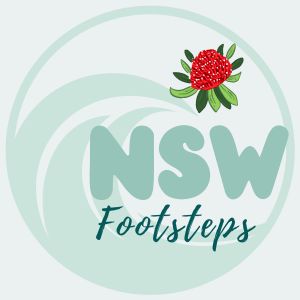
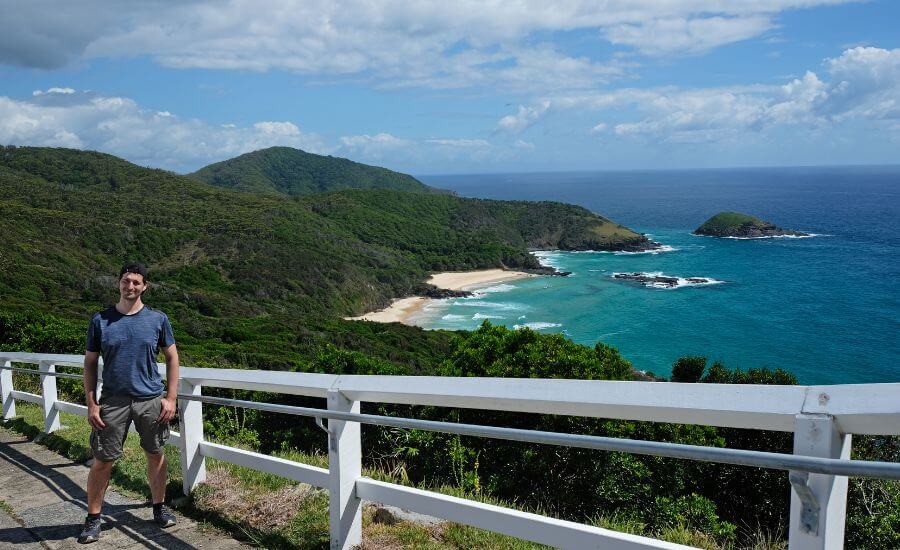





































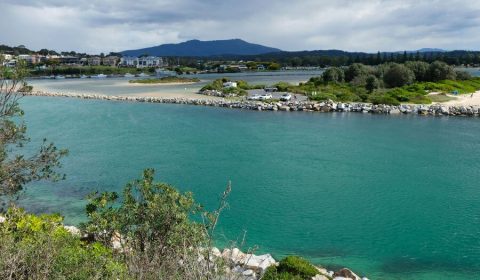
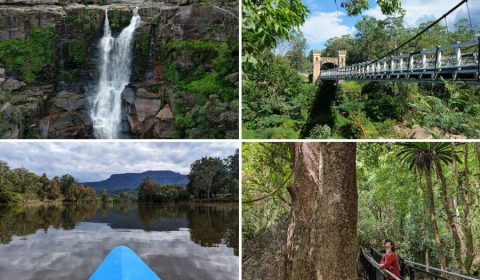
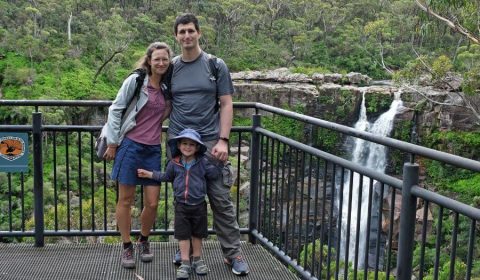
Leave a Reply